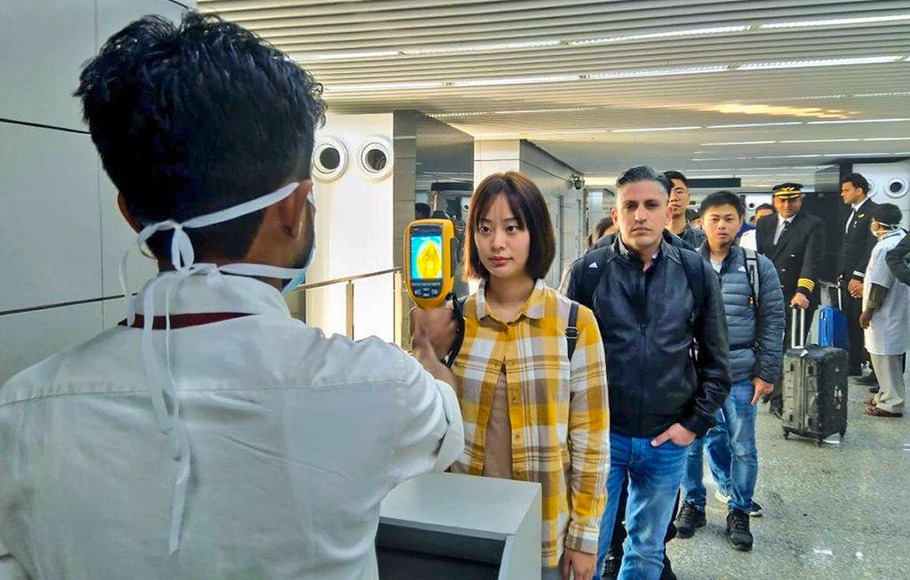
Frequent flier? Then read this ahead of holiday season amid Omicron threat

December was to be the month that could potentially turn the tide for the travel industry – a trickle of business from inbound international travellers had started to come in while domestic travellers too were gearing up for the holiday season.
Then came the Omicron threat, and there is uncertainty in the air, again.
“With the new variant Omicron emerging, it has once again stopped the revival path for international travel,” says Jay Bhatia, Vice-President of Travel Agents’ Association of India (TAAI). Inbound leisure travel into India from overseas has seen a lot of cancellations after India put off international flight operations to January 31.
“On the domestic front, the situation seems to be under wait and watch with not many cancellations or changes happening. Many would be cautious till December 15 by when we should have a clear picture of the spread of Omicron,” says Bhatia.
In fact, a report says the number of domestic travellers has seen no dip at Delhi IGIA, the busiest airport in the country.
Also read: World’s pettiness, biggest obstacle in dealing with Omicron
According to the civil aviation ministry’s daily figures, domestic traffic in the first week of December saw 3.5 lakh passengers every day. Air travel within the country has picked up since October and has been climbing towards pre-pandemic levels.
The Directorate General of Civil Aviation (DGCA) on Thursday extended the suspension on scheduled commercial international flights till January 31. This restriction, however, shall not apply to international all-cargo operations and flights specifically approved by the DGCA. International scheduled flights may still be allowed on select routes by the authorities on a case-to-case basis.
Should you panic?
There is no reason to switch on the panic button as this decision doesn’t translate into an automatic cancellation of all scheduled international flights. Global flights are right now operating under special air-bubble arrangements and these flights will continue to operate as per their schedule.
India has air bubble arrangements with 32 countries, including the US, Singapore, Qatar, the UAE, the UK, Bhutan, France, Germany, among others. However, travel to these countries will be subject to their health guidelines.
Changes to the list of ‘at-risk’ countries
India also changed its list of ‘at-risk’ countries. Travellers from these nations are subjected to additional health requirements.
Now, Singapore and Bangladesh have been removed from the list of ‘at-risk’ countries. So passengers from these places will be allowed to travel to India without a necessary quarantine. The government has meanwhile added Ghana and Tanzania to the list.
Currently, the list of ‘at-risk’ countries comprises Europe, including the UK, in addition to South Africa, Brazil, Botswana, China, Ghana, Mauritius, New Zealand, Zimbabwe, Tanzania, Hong Kong and Israel.
Managing crowds at airports
Meanwhile, airports across the country appear to be coming to grips with the confusion from overcrowding due to stricter screening processes. Reports of chaos at airports have prompted Union Civil Aviation Minister Jyotiraditya Scindia to call for an 8-point action plan to manage immigration queues, expand RT-PCR service providers and ramp up help-desks and forex counters.
Also read: New US travel rules have just kicked in; here’s what you should know
The Kempegowda International Airport in Bangalore said it increased testing capacity to 58 express PCR test machines from 8 earlier. In addition, swab tests are being collected prior to immigration/customs screening so that passengers could receive their reports by the time they collect their baggage, it said in a press release earlier this week. The Mumbai international airport said it has set up 100 registration counters and 60 sampling booths, including 100 Rapid PCR machines. At Delhi, 120 Rapid PCR machines have been deployed.
Currently, express PCR tests cost Rs 2,900 in Chennai, Rs 3,900 in Mumbai and Hyderabad, Rs 3,500 in Delhi and Rs 3,000 in Bangalore. The standard RTPCR tests – which take much longer – are priced between Rs 500-600 in most airports.
The random testing of 2-5 per cent of passengers of each incoming international flight roughly translates to 10-12 passengers per aircraft, says Bhatia of TAAI. “Airports across India shall now be able to comfortably handle the situation unless many flights land together at the same time,” he says.
“Domestic travel is almost to the same level as it used to be and one of the reasons for that was with people not travelling abroad, they were travelling domestic,” says Rajiv Mehra, president of Indian Association of Tour Operators. “Which as why there was a jump as far as domestic tourism is concerned.”
According to Mehra, the continuing suspension of scheduled international flights has again put the dampener just when things were beginning to look up for the industry that has been down for the last 20 months.
“When the tourist visas started from November 15, there was some trickle of business. No big groups or anything but individuals here and there started coming in. But things had started moving a little bit,” says Mehra. “And, if this wouldn’t have been there, by March-April things would have been slightly better.”

